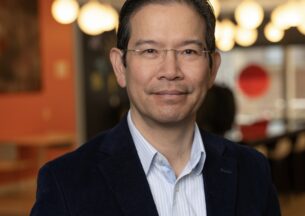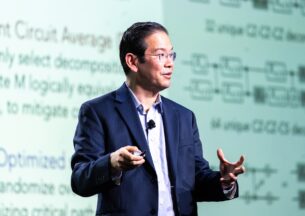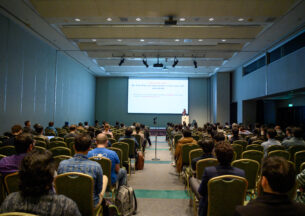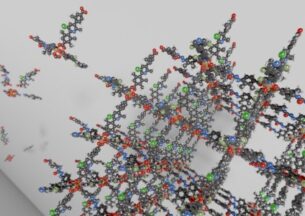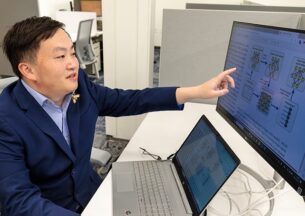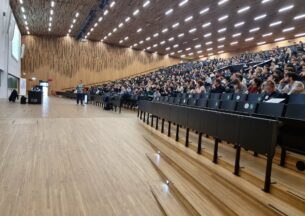University of Chicago to Develop Software for Effort to Create a National Quantum Virtual Laboratory
The University of Chicago is celebrating a major achievement with the recent announcement of a $1 million investment from the U.S. National Science Foundation (NSF) for the first year of the ambitious Quantum Advantage Computing and Technology Initiative (QACTI) project. This effort will create a quantum computing user facility which will serve as a National Quantum Virtual Laboratory.

The QACTI project, a groundbreaking collaboration led by Duke University, and involving Tufts University, North Carolina State University, and North Carolina Agricultural and Technical State University, is set to redefine the boundaries of quantum computing. UChicago’s Co-Principal Investigator will be the Department of Computer Science’s Seymour Goodman Professor Fred Chong. With the help of his expertise in quantum software and systems, the initiative aims to construct a cutting-edge 256-qubit ion trap quantum computer, with the goal of achieving quantum advantage—a milestone that could significantly outperform classical computing systems in solving complex scientific problems.
The $1 million investment will support the initial phase of the project, focusing on foundational design and development activities. The QACTI system will provide an invaluable resource for the quantum information science and engineering (QISE) community, promoting groundbreaking research and technological advancements.
The QACTI project is set to revolutionize the field of quantum computing through its comprehensive approach, which includes hardware construction, software development, and workforce training. The project will engage with the broader scientific community through workshops and collaborative efforts, ensuring that the latest innovations in quantum algorithms and hardware are integrated into the system.

The initiative will follow a structured timeline, with significant milestones including the design of the 256-qubit architecture, the implementation of the software stack, and the deployment of the full QACTI system. By the end of the first year, the project will focus on evaluating state-of-the-art trap fabrication and integrated optics options, laying the foundation for future phases.
One of the key goals of the QACTI project is to foster innovation and build a robust quantum workforce. The initiative will create opportunities for graduate students, postdoctoral researchers, and professionals through a comprehensive training program. Special emphasis will be placed on engaging underrepresented groups and institutions with diverse populations, ensuring a broad and inclusive participation in the quantum computing field.
“Quantum computing is on the cusp of revolutionizing many aspects of computing,” said Chong. “It is critical to expand our quantum workforce and make sure that a broader population of talent can take part in this revolution.”
The QACTI project benefits from strong partnerships with national laboratories, private companies, and academic institutions. Collaborations with entities such as Sandia National Laboratories and industrial partners will be crucial for advancing trap fabrication and control systems. These partnerships will enhance the development and deployment of the QACTI system, ensuring its success and sustainability.
With this substantial investment and a clear vision for the future, the QACTI project is poised to make significant contributions to quantum computing and scientific research. As the project progresses, the university will continue to update the scientific community on its achievements and milestones, reinforcing its role as a leader in the quest for quantum advantage.
For more information on the QACTI project and its progress, please contact UChicago CS.



